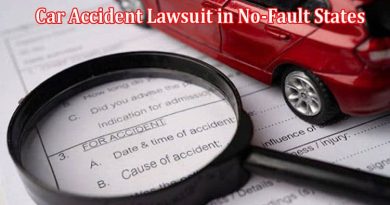Personal Injury Cases – What Do They Involve?
Every year, more than 400,000 personal injury claims are filed in the United States, with about 16,397 of them going to trial. It is one of the most common law areas that prompts people to hire a personal injury attorney for help and advice. Usually, these cases begin when someone gets injured due to someone else’s negligence.
But not many people know what a personal injury case involves. Sometimes, these lawsuits end up being more complex than you could imagine. If you’re considering making a personal injury claim, you must know what steps to take.
This post will prepare you for your personal injury case, so keep reading.
What Exactly Is a Personal Injury Case?
Personal injury cases take place when an individual is injured as a result of another person’s negligent actions. They could arise from things such as car crashes, slip and fall incidents, dog bites, medical malpractice, wrongful death, and many others.
However, there are also cases when personal injury is caused by recklessness. It is still a type of negligence, but a more severe one. One example would be driving under the influence.
The injured person may require medical attention either for a short or a long amount of time. In some instances, surgery may be necessary as well. There are also situations when the injury causes someone to lose work hours or leaves them permanently damaged, potentially requiring house modifications due to disability.
To cover the expenses, he or she has the right to seek compensation, which is where personal injury lawsuits come in handy.
Personal Injury Lawsuit Process
A personal injury claim will usually involve a few stages. Here are the steps one goes through during the process:
-
Hiring a Personal Injury Attorney
Following the personal injury, you will have to look for a reliable and experienced personal injury attorney. Having an attorney can increase your chances of proving the other party’s liability and getting compensation. It may take some time to browse through all the available law experts in your area, but it’s worth the effort.
When you meet the lawyer, you must make sure you have relevant documentation with you such as medical records, pictures, and notes regarding the incident, etc.
It’s also crucial to ask the attorney as many questions as possible to see if they are right for you. Find out the rate and if you’re ok with everything you were presented, you should hire them.
-
Investigating the Situation
An attorney will begin researching the case to find out what happened and how severe your injuries are. This is useful in assessing how much you deserve in compensation.
Your lawyer will reach out to the insurance company and begin negotiating. Meanwhile, you should focus on resting and getting medical care.
-
Settling the Case
Not all personal injury cases go to court. Sometimes, a settlement is reached beforehand as the liable party will make an offer for a settlement. Your attorney will also advise you on whether you should accept the settlement or not. However, it is up to you to make the final decision.
-
Filing the Lawsuit
When you cannot reach a good settlement, your attorney will move to the next step – going to court. Here, you have higher chances of getting the desired compensation, but these processes are lengthy, sometimes taking months or even years.
Economic and Non-Economic Damages
A plaintiff can recover money for two types of damages: economic and non-economic.
Economic damages in personal injury claims usually include:
- Property damage
- Personal care and in-home health care cost
- Medical treatment, expense, and care cost
- Lost income and wages, including salaries and benefits
Meanwhile, non-economic damages include:
- Emotional distress
- Mental trauma
- Physical pain and suffering
- Disfigurement
- Scarring
- Quality or enjoyment of life loss
- Psychological injuries like anxiety, depression, and PTSD
What Is the Statute of Limitations for Personal Injury Cases?
Just like with any type of lawsuit, there is a particular statute of limitations when it comes to personal injury cases. The plaintiff can make the claim from the moment the injury occurred or was discovered.
However, the statute of limitations is usually dictated by the state. So, while it generally begins when the person is injured or finds the injury, the end date depends on state law.
In California, for example, the statute of limitations is two years from the date of the injury. That means that during this time, you will have to find a personal injury lawyer in Salinas or any other area in California and ensure you collect all the necessary documents so you can file your case. On the other hand, New York has a statute of limitations of three years, while the statute of limitations for Florida personal injury cases is four years. That would give the victim ample amount of time to work with a New Port Richey personal injury attorney
Final Thoughts
Personal injury cases are very common and require the help of an attorney for the highest chance of success for the victim. Make sure to gather as much evidence as possible for the best outcome.




